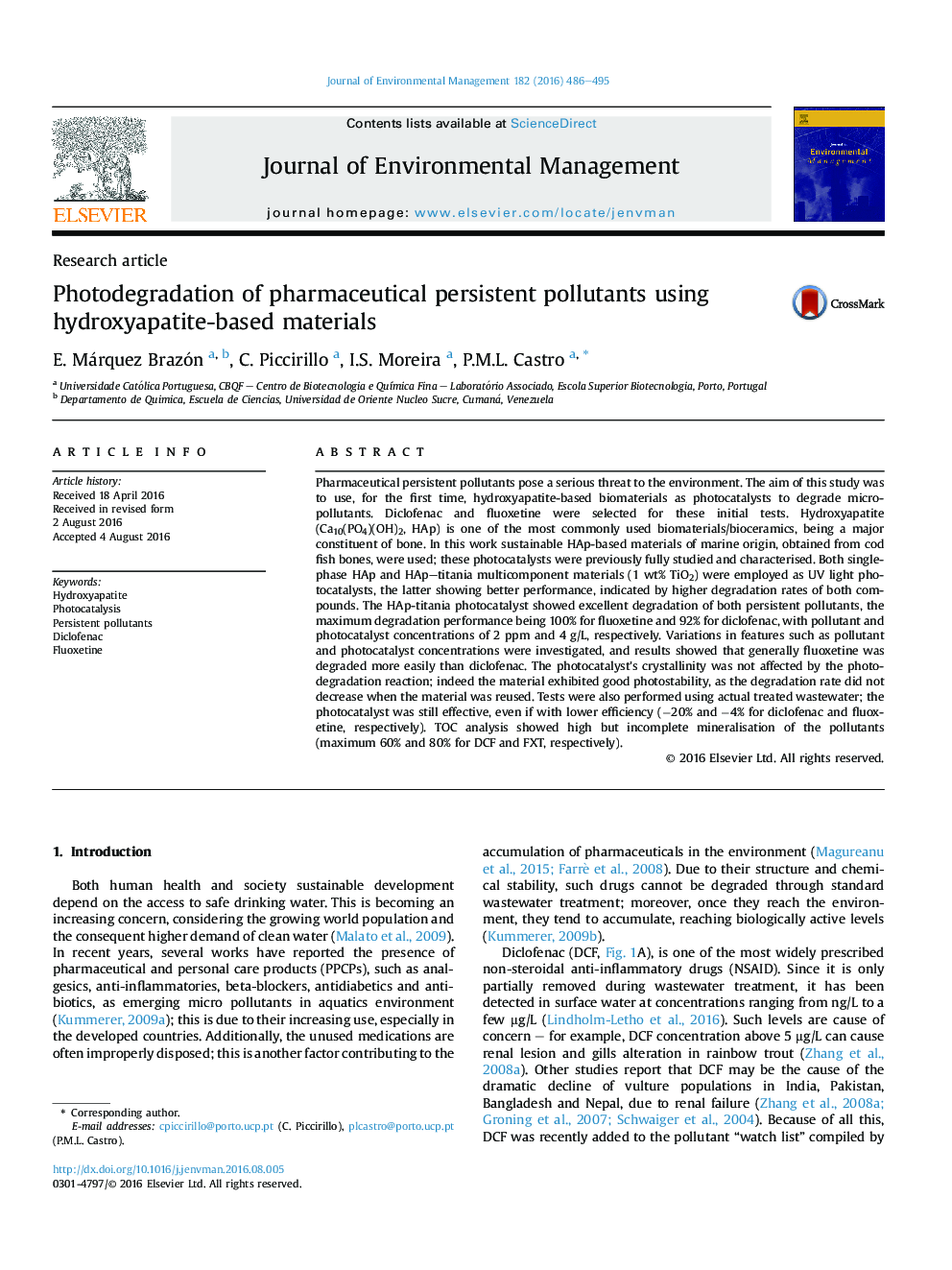| کد مقاله | کد نشریه | سال انتشار | مقاله انگلیسی | نسخه تمام متن |
|---|---|---|---|---|
| 7479222 | 1485230 | 2016 | 10 صفحه PDF | دانلود رایگان |
عنوان انگلیسی مقاله ISI
Photodegradation of pharmaceutical persistent pollutants using hydroxyapatite-based materials
ترجمه فارسی عنوان
آفتاب سوختگی از آلودگی های پایدار دارویی با استفاده از مواد هیدروکسی آپاتیت
دانلود مقاله + سفارش ترجمه
دانلود مقاله ISI انگلیسی
رایگان برای ایرانیان
کلمات کلیدی
هیدروکسی آپاتیت، فوتوکاتالیز، آلاینده های ماندگار، دیکلوفناک، فلوکستین،
موضوعات مرتبط
مهندسی و علوم پایه
مهندسی انرژی
انرژی های تجدید پذیر، توسعه پایدار و محیط زیست
چکیده انگلیسی
Pharmaceutical persistent pollutants pose a serious threat to the environment. The aim of this study was to use, for the first time, hydroxyapatite-based biomaterials as photocatalysts to degrade micropollutants. Diclofenac and fluoxetine were selected for these initial tests. Hydroxyapatite (Ca10(PO4)(OH)2, HAp) is one of the most commonly used biomaterials/bioceramics, being a major constituent of bone. In this work sustainable HAp-based materials of marine origin, obtained from cod fish bones, were used; these photocatalysts were previously fully studied and characterised. Both single-phase HAp and HAp-titania multicomponent materials (1 wt% TiO2) were employed as UV light photocatalysts, the latter showing better performance, indicated by higher degradation rates of both compounds. The HAp-titania photocatalyst showed excellent degradation of both persistent pollutants, the maximum degradation performance being 100% for fluoxetine and 92% for diclofenac, with pollutant and photocatalyst concentrations of 2 ppm and 4 g/L, respectively. Variations in features such as pollutant and photocatalyst concentrations were investigated, and results showed that generally fluoxetine was degraded more easily than diclofenac. The photocatalyst's crystallinity was not affected by the photodegradation reaction; indeed the material exhibited good photostability, as the degradation rate did not decrease when the material was reused. Tests were also performed using actual treated wastewater; the photocatalyst was still effective, even if with lower efficiency (â20% and â4% for diclofenac and fluoxetine, respectively). TOC analysis showed high but incomplete mineralisation of the pollutants (maximum 60% and 80% for DCF and FXT, respectively).
ناشر
Database: Elsevier - ScienceDirect (ساینس دایرکت)
Journal: Journal of Environmental Management - Volume 182, 1 November 2016, Pages 486-495
Journal: Journal of Environmental Management - Volume 182, 1 November 2016, Pages 486-495
نویسندگان
E. Márquez Brazón, C. Piccirillo, I.S. Moreira, P.M.L. Castro,
